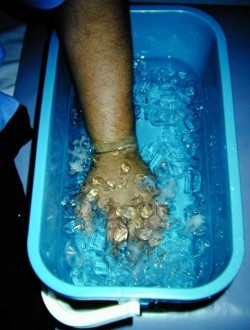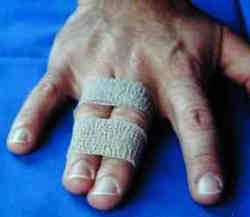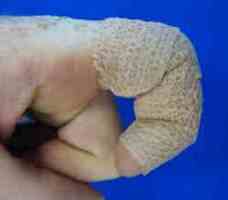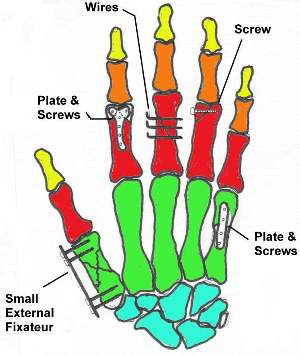Hand Fractures
General
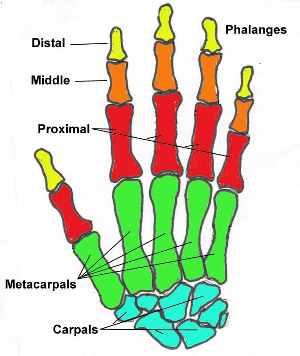
There are 27 bones in the hand & wrist. A fracture occurs when excess force is applied
to a bone. This may occur with a twist, cutting or crushing injury or commonly from a fall onto
the outstretched hand. When the forces are severe the bone may end up in multiple pieces or become significantly displaced resulting in a deformity. An open (or compound) fracture is when a bone fragment shows through the skin & is at risk of infection.
Many people think that a “fracture” is different from a “break”, but they are the same.
Effect on the hand
The forces causing a fracture may also injure other structures such as muscles, tendons & ligaments.
When a bone breaks there is bleeding from the bone ends.
Bleeding leads to scarring which results in stiffness particularly in the fingers.
If a fracture involves the joint surface then arthritis may develop later in life.
Fracture Types
Stable Unstable (@1)
- - rotated
Undisplaced Displaced - - short
- - bent
Joint involved - Step __ ---
- Gap __ __
Bone quality - Osteoporosis
Number bone fragments - "comminution"
Growth Plate involved (children) Salter Harris Classification 1-5
Acceptable Unacceptable (@2)
Fixable Not Fixable (@3)
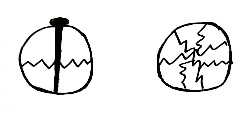
"Fixable" "Not Fixable / Comminuted" ie many fragments
(@1) A "Stable fracture" means that the finger can be moved immediately even though the fracture has not yet healed. This is because the envelope around the bone ( Periosteum) is still intact. A fracture may be unstable on Day 1 and become stable enough to move after only a few days as the periosteum thickens and provides initial stability. (Peri = around Osteum = bone). Determining fracture stability requires considerable experience and depends on many factors.
(@2) "Acceptable" - Sometimes it is preferable to accept a degree of deformity and get the finger moving immediately rather than attempt to fix a highly comminuted fracture and fail to achieve stability and then have to splint the finger. This may improve the finger alignment but result in a permanently stiff finger. ie perfect alignment is not necessary to achieve satisfactory function.
(@3) "Fixable" means that the fracture has been stablised enough to allow immediate Active range of movement exercises.
Treatment Principles:
1. Reduce swelling - ice packs,
- elevation
- Coban
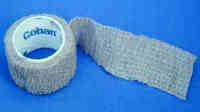
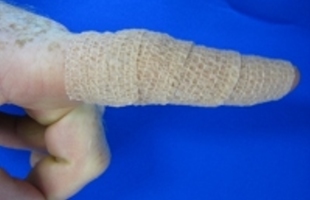
2. Control pain - splint, pain killers
3. Prevent stiffness - early movement if the fracture is stable (even before the fracture has healed)
4. Stabilise the unstable
5. Correct deformity - rotation
- angulation
- shortening
- joint step --->to prevent arthritis
“Reduction” means pulling the bones back into place. This can be done “Closed “ in which no cut is made & a plaster or splint is applied or “ Open” where a cut is performed & the bones are directly repositioned . An open reduction often requires the use of wires, plates & screws. An External fixateur is where metal bars outside the body connect pins extending into the bone above & below the fracture site
.
Occasionally bone is missing or severely crushed & so bone graft may be taken from some other part of the body (often the hip) to fill the defect & help bone healing.
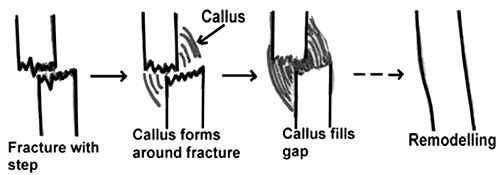
Results
- Perfect alignment of the bone on X-ray is not always necessary to get an excellent result.
- A bony lump may appear at the fracture site as the bone heals & is known as “fracture callus”. This is a normal part of the healing process & usually gets smaller over time.
- Stiffness is the commonest problem & so movement is started as soon as it is safe to do so. Please closely follow the recommendation of your surgeon & hand therapist.
- Occasionally loss of bone alignment occurs & additional treatment may be required
In general it takes 6 weeks for a hand fracture to heal. Often it takes much longer for the X Ray to show signs of healing (3 - 5 months). This is variable so carefully follow instructions.
________________________________________________________________________________________________
LAST UPDATED ON 28 / 2 / 15

